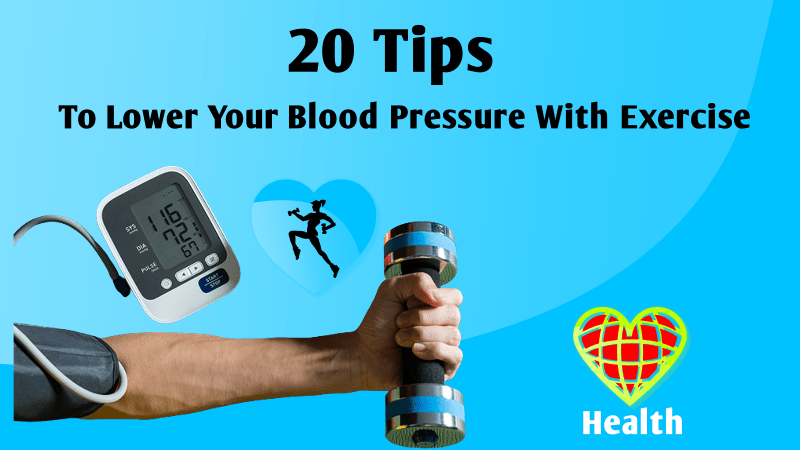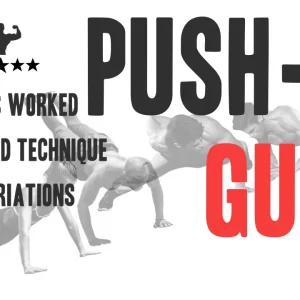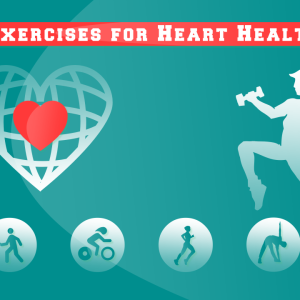Contents
- Exercise and High Blood Pressure
- Put the Fun Back in Exercise
- Hit the Gym
- Strengthen Your Heart
- Can’t Take the Heat? Then Swim
- How Much Exercise Is Enough?
- Getting Started
- Pace Yourself to Avoid Injury
- Make Exercise Convenient
- Try Mini-Workouts
- Set Up a Home Gym
- Warm Up and Cool Down
- Try a Heart Rate Watch
- Medication and Heart Rate
- Know the Safety Tips
- See Your Doctor Regularly
- Beyond Exercise: The DASH Diet
- Beyond Exercise: Lose 10 Pounds
- Beyond Exercise: Watch Out for Salt
- Beyond Exercise: Can Alcohol Help?
Exercise and High Blood Pressure
High blood pressure affects about 1 in 3 American adults and increases your risk of heart disease and stroke. Exercise, weight management, and a healthy diet are important ways to help prevent high blood pressure. Working out also boosts the effectiveness of blood pressure medication if you’re already being treated for hypertension. Be sure to check with your doctor before starting a fitness program.
Put the Fun Back in Exercise
Find activities you enjoy and aim for 30 minutes a day of “exercise” on most days of the week. Daily housework, gardening, washing windows, using the stairs, carrying your groceries, walking at the mall, or riding bikes with the kids all add up to exercise that benefits your heart.
Tip: Increase activity by parking at the end of the lot, or get off the bus a stop early and walk to your destination.
Hit the Gym
You don’t need to belong to a gym to become more active. But some people find it easier to focus on their workout in a gym setting. As an added bonus, the trainer at your local fitness center can teach you how to use the equipment properly to avoid injury. If any move feels wrong, check with your trainer. Depending on your health and physical condition, some exercises may not be recommended.
Strengthen Your Heart
Resistance exercise can be done with in many ways, such as with free weights, weight machines, exercise bands, or by doing abdominal crunches or curl-ups. Resistance training helps reduce body fat, increase muscle mass, and boost your metabolic rate. Losing as little as 10 pounds can reduce or help prevent high blood pressure in many overweight individuals. Check with your doctor before starting a new weight-training program.
Can’t Take the Heat? Then Swim
Heart-pumping conditioning exercise is important for lowering blood pressure. But if you can’t take the heat, try swimming at your local “Y” or fitness center. Swimming for 30 minutes reduces the amount of circulating adrenaline in the body and relaxes blood vessels. Swimming can help lower your pulse rate and lower blood pressure.
How Much Exercise Is Enough?
Regular exercise may prevent or control high blood pressure. Moderate-level aerobic activities, such as brisk walking, for 30 minutes a day may be enough to keep you off medications or help them work more effectively. Exercise can reduce your blood pressure readings by as much as 5-15 points. Gradually increase the intensity of your workout to continue lowering your blood pressure to safer levels.
Getting Started
Haven’t exercised in a while? Start slowly to prevent injuries. Start with 10 to 15 minutes of exercise you enjoy, such as walking around the block or on a treadmill. As you get stronger, increase the time and intensity of your workout until you reach the goal of 30 minutes each day. Avoid sudden vigorous exercise or cramming your workout routine into a couple days in an attempt to catch up, which can lead to injury.
Pace Yourself to Avoid Injury
If you’re new to exercise, remember to pace yourself. Select a low- to moderate-intensity exercise such as yoga, cycling (leisurely), gardening, mall walking, water aerobics, or swimming (moderate pace). Gradually increase the intensity and duration of exercise as you become fitter to help maintain your lowered blood pressure.
Make Exercise Convenient
Make sure exercise fits your busy schedule. You can work out while the kids are at soccer practice, before or after work, or even during your lunch break. If it’s hard to get out of the house, consider getting a stationary bike or treadmill to use while watching the evening news or while the baby naps.
Try Mini-Workouts
Try 10 minute mini-workouts and do these throughout your busy day. For example, you can jog in place, do calisthenics, or actively vacuum your house for 10 minutes. Three 10-minute mini-workouts equal 30 minutes of daily exercise, enough to give an extra boost to your heart’s health.
Set Up a Home Gym
Want to exercise but have no time to hit the gym? Then create your own at home. Purchase a step bench, free weights, exercise bands or tubes, and a yoga or fit ball. Store it in a spare closet. Use these daily for your home gym workout. Also consider getting a treadmill or stationary bike to help you burn fat and build endurance.
Warm Up and Cool Down
According to the American Heart Association, warming up before exercise and cooling down after are important for people with high blood pressure. These exercises let your heart rate increase and decrease gradually. Walking in place or on a treadmill for 10 minutes is fine for warming up before exercise and also for cooling down.
Try a Heart Rate Watch
A heart rate watch can let you quickly assess your pulse. Here’s how to use one. Put the band that comes with it on your chest underneath your shirt. By looking at the watch during exercise, you can see your actual heart rate. This is a good alternative to taking your pulse manually. Ask your doctor to recommend the best target heart rate zone (or training zone) for you.
Medication and Heart Rate
Some heart medications such as beta-blockers or calcium-channel blockers can slow your heart rate. Talk to your doctor and ask what your best target heart rate zone should be during exercise if you take these medications.
Know the Safety Tips
No matter what exercise you do, be aware of your limitations. If the exercise or activity hurts, then stop! If you feel dizzy or have discomfort in your chest, arms, or throat, stop. Also, go slower on hot and humid days or exercise in an air-conditioned facility.
See Your Doctor Regularly
Getting your doctor’s approval before starting a fitness program is important if you are sedentary, overweight, or have a high risk of coronary heart disease or other chronic health problem. It’s important to have your blood pressure measured by a health care professional, who can advise you as to how often to have it rechecked. Don’t wait for unreliable signs such as headaches, a red face, or stress to tell you your blood pressure is too high.
Beyond Exercise: The DASH Diet
You can lower your systolic blood pressure (the top number) by switching to the DASH diet. The DASH diet is based on 2,000 calories a day. It’s rich in fruits, vegetables, and low-fat dairy products. It’s also low in saturated fat, cholesterol, and total fat. According to studies, adopting a DASH diet can reduce systolic blood pressure by 8-14 points. For those over age 50, a systolic blood pressure higher than 140 is a greater risk factor for heart disease than the diastolic blood pressure (lower number).
Beyond Exercise: Lose 10 Pounds
Findings show that losing as few as 10 pounds, if you’re overweight, can help reduce or prevent high blood pressure. To lose weight, take in fewer calories than you use each day. Ask your doctor or a registered dietitian how many calories you need daily for weight loss. In addition, boost exercise to burn even more calories.
Beyond Exercise: Watch Out for Salt
The national blood pressure guidelines recommend limiting sodium to no more than 2,300 milligrams a day (about 1 teaspoon of table salt) or 1,500 milligrams a day, depending on age and other characteristics. By staying on a sodium-restricted diet, your systolic blood pressure (top number) may drop 2 to 8 points. Salt-restricted diets can also help enhance the effects of most blood pressure medications.
Tip: Substitute herbs for salt when cooking, and avoid processed meats and canned foods.
Beyond Exercise: Can Alcohol Help?
The Joint National Committee on Prevention, Detection, Evaluation, and Treatment of High Blood Pressure recommends moderate alcohol consumption: No more than two drinks per day for men and no more than one drink per day for women. A drink is defined as 12 ounces of beer, 5 ounces of wine, or 1.5 ounces of 80-proof liquor.



